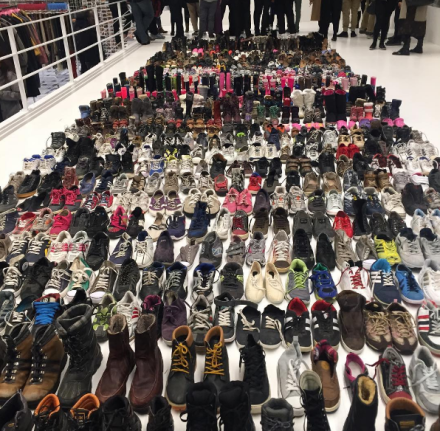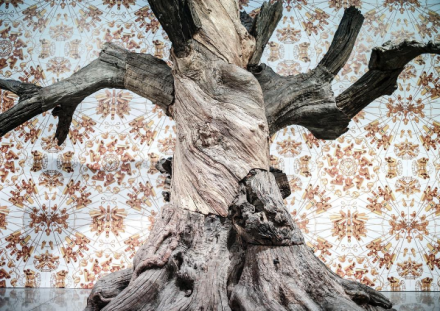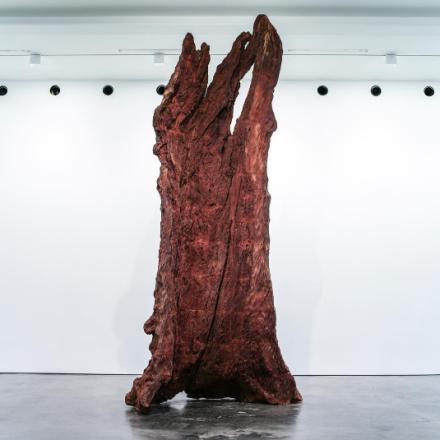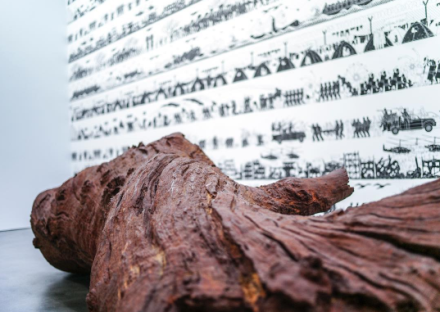
Ai Weiwei, Roots and Branches at Lisson (Installation View), via Art Observed
Ai Weiwei has returned to New York City for the first time since the return of his passport from the Chinese government, opening a quartet of exhibitions across its urban expanses that offer a strikingly deep and varied series of perspectives into the artist’s practice over the past few years. Spread out across both locations of the Mary Boone Gallery, in addition to a show at Lisson, and one at Jeffrey Deitch Projects, the artist’s selection of works presents a nuanced look at his ongoing investment in the defense and articulation of universal human rights, moving from China, to Syria, and beyond.

Ai Weiwei, Roots and Branches at Mary Boone (Installation View), via Art Observed

Ai Weiwei, Laundromat at Jeffrey Deitch (Installation View), via Art Observed
The range of perspectives explored across the artist’s former home city, where he lived and studied during the 1980’s, presents glimpses of his practice in deep time, with running themes and material interests spread across a range of geographically-precise subjects and histories. Perhaps most prominent is his exhibition Laundromat, on view at Jeffrey Deitch’s downtown exhibition space. Ai has filled the space with reclaimed, cleaned and pressed clothing from the refugee camp in Lesbos, Greece. Providing the same services as a laundromat, cleaning and recording the clothing that passes into his possession from these displaced persons, the artist’s performance of service industry labor ultimately reclaims a sense of humanity and ownership for people who have been so brutally deprived of fundamental human rights. Complementing this, the absence of these original owners speaks to their legal confinement, where their clothes and other material goods can move more efficiently and quickly than their own bodies. Combined with photographic documentation of these peoples, and the various passages they have made to escape the war in Syria, the show makes the human cost of war and oppression abundantly clear.

Ai Weiwei, Laundromat at Jeffrey Deitch (Installation View), via Art Observed

Ai Weiwei, Laundromat at Jeffrey Deitch (Installation View), via Art Observed

Ai Weiwei, Roots and Branches at Mary Boone (Installation View), via Art Observed
The artist’s exhibitions at Mary Boone, by contrast, offers a notably more subdued reading of his work, featuring continuations and elaborations on the artist’s projects over the past several years. Both spaces are covered with varied wallpapers designed by the artist, each of which offer nuanced variations on previous projects. Uptown, a ring of spouts from antique porcelain teapots are countered by a wallpaper recalling the artist’s infamous Study of Perspectives series, showing him giving the middle finger to Chinese landmarks and sites of government violence. Downtown, he returns his newer wallpaper work depicting rings of CCTV cameras, turning government surveillance into a pervasively visible theme. This is countered by Tree, a monumental sculpture formed from assembled segments of trees in Southern China. Playing on concepts of lifelessness and mechanization, the work creates a staggering impression through artificial attempts at unity, a note that could be read as a comment on the political ethos and conflicting identities of modern China.

Ai Weiwei, Roots and Branches at Lisson (Installation View), via Art Observed
The artist is showing a similar body of work at Lisson Gallery, which opens its first solo show by the artist in its recently opened Chelsea home. Presenting a variation on his Tree work, shown here as a deconstructed series of limbs, bark chunks, and other pieces reclaimed from the forests of China, the show offers a fitting visual counterpoint to his exhibition at Mary Boone, cast in iron and demanding a focused perspective on the intersections of natural form and industrial materiality. Shown alongside a wallpaper installation that continues threads introduced elsewhere, the work on view offers a final point of commentary on the artist’s continued investigation of Chinese identity, even as he continues to look farther afield for his subjects, political conflicts and situations to explore and critique.
The exhibitions close December 23rd.

Ai Weiwei, Roots and Branches at Lisson (Installation View), via Art Observed
— D. Creahan
Read more:
Ai Weiwei: Laundromat [Jeffrey Deitch]
Ai Weiwei: Roots and Branches [Lisson Gallery]
Ai Weiwei: Roots and Branches [Mary Boone]



